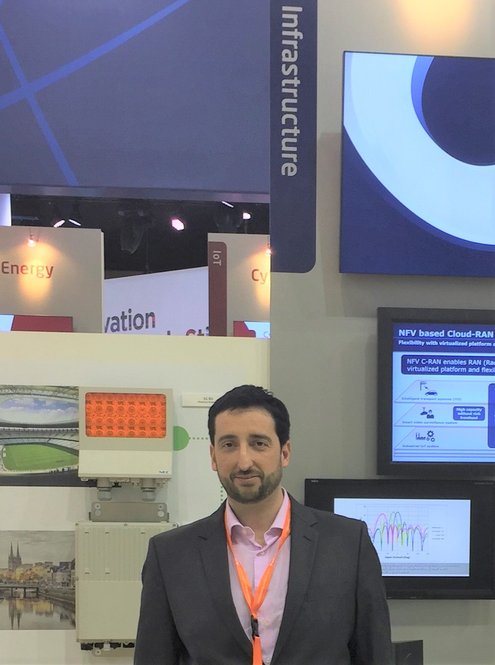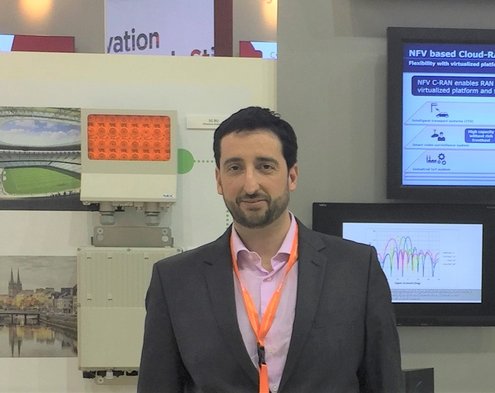Interview between Elmundo and Dr. Xavier Costa Pérez, Head of 5G/6G R&D at NEC Laboratories Europe. i2cat Scientific Director. ICREA Research Professor. Originally published March 5, 2022.
5G is specifically designed to accelerate the digital transformation of industries
NEC Laboratories Europe offers solutions to our society's biggest challenges by pushing the boundaries of 5G, 6G, AI, IoT and Blockchain technologies
NEC Laboratories Europe was founded in 1997 in Heidelberg, Germany. As a result of our cutting-edge research, we transfer solutions in 5G, 6G, AI, IoT and Blockchain technologies to NEC Corporation's business units and publish in leading global scientific conferences and journals. "Amongst our ranks are researchers and experts from more than 25 countries, half of whom are PhDs, who have helped build our outstanding reputation in Europe. A defining attribute of NEC Laboratories Europe is our drive towards open innovation. In Spain, for example, we have collaboration agreements with i2cat in Barcelona and IMDEA in Madrid," says Dr. Xavier Costa Pérez, Head of 5G/6G R&D at NEC Laboratories Europe.
Everyone is talking about 5G as a disruptive technology that will change the world. As an expert, can you tell us exactly what it is and what we use it for now and might use it for in the future?
5G is the technological evolution of 4G which we all use every day on our mobile phones in order to offer us superior performance. The main difference is that 5G has also been specifically designed to accelerate the digital transformation of industries: transport, logistics, energy, healthcare, Industry 4.0, smart cities, governments, etc. The World Economic Forum has estimated that the impact of 5G represents a $13 trillion opportunity for global growth and 22 million new jobs thanks to its potential to transform different economic segments that have not yet been digitalised.
We mentioned that you are an expert, but perhaps an introduction would not go amiss. What can you tell us about yourself?
I have a PhD in Telecommunications Engineering and have worked for more than 20 years at NEC in multiple leadership positions. We’ve had a major impact with the development of technologies that have been successfully incorporated into commercial products such as mobile phones, base stations and network management systems with artificial intelligence. I currently combine my role at NEC Laboratories Europe with the position of Scientific Director at i2cat and ICREA Research Professor.


And while we're at it, what should we know about NEC Laboratories Europe's research in the area of 5G? Can you give us some examples of your work?
In my research group we have been working on different disruptive technologies that will revolutionise the digital transformation of society. In the field of emergency rescue, for example, we have developed technology that makes it possible to find victims using the mobile phone that we all carry around with us. Without the need for victims to use their mobile phones or install an app. We can find their location in remote areas with drones that integrate a base station with our technology. We automatically find lost people by flying over the area where a disaster has occurred or searching for someone who has gone missing.
A major breakthrough...
That's right. Another example is self-driving cars, where we are part of a large European project (5G-CARMEN) that aims to ensure that autonomous driving in Europe doesn’t have to stop when you cross internal borders. In this case, we participated in a proof of concept trial involving a route across three countries (Germany, Austria and Italy), 600 km of motorway, three operators, two network equipment suppliers and two European car brands. The aim is that, by the end of the project, a solution for European autonomous driving across borders will have been designed and validated to ensure it can be implemented effectively in the near future.
With regard to artificial intelligence (AI) technology applied to 5G, we have focused on Open RAN networks, a cloud-based open architecture that provides greater flexibility and efficiency for the deployment of these networks. NEC is a leader in 5G Open RAN with AI solutions for the automatic optimization of radio resource utilisation, automated dynamic management of its various network components via radio intelligent controllers, as well as a reduction in the power consumption required for virtualised operation in cloud environments.
Not that 5G will be outdated by the time this interview ends, but you guys are already talking about 6G, right?
Yes, we started defining 6G and there will be a part of the natural evolution of the 5G technologies that are being deployed, as well as more disruptive technologies such as Smart Surfaces or RIS (Reconfigurable Intelligent Surfaces). RIS consist of panels that are easy to install on walls, ceilings or windows and reflect mobile signals in a configurable way. The disruptive potential of RIS for future 6G deployments is enormous, as it can be applied to address many of the challenges of today's 5G that require more costly solutions, such as additional base stations.
In wireless-hostile environments, such as factories, they can be easily installed to avoid major material obstacles. In very dense areas that require greater connectivity, such as metro stations or shopping centres, smart surfaces will be able to meet these needs in a more energy and cost efficient way.
Finally, in the case of the digitalisation of society, where 6G is intended to merge the digital and physical worlds more deeply, a new disruptive technology will involve integrating communication and sensor systems. This technology, known as ISAC (Integrated Sensing and Communications), aims to use 6G for the deployment of a single common ISAC infrastructure that will allow us to build digital twins of our society as faithfully and efficiently as possible in the future.
"We started defining 6G and there will be a natural evolution of the 5G technologies that are being deployed, as well as more disruptive technologies such as Smart Surfaces."
This post is a translation from an article that was published by Elmundo on Saturday, March 5, titled, “El 5G ha sido específicamente diseñado para acelerar la transformación digital de las industrias.”